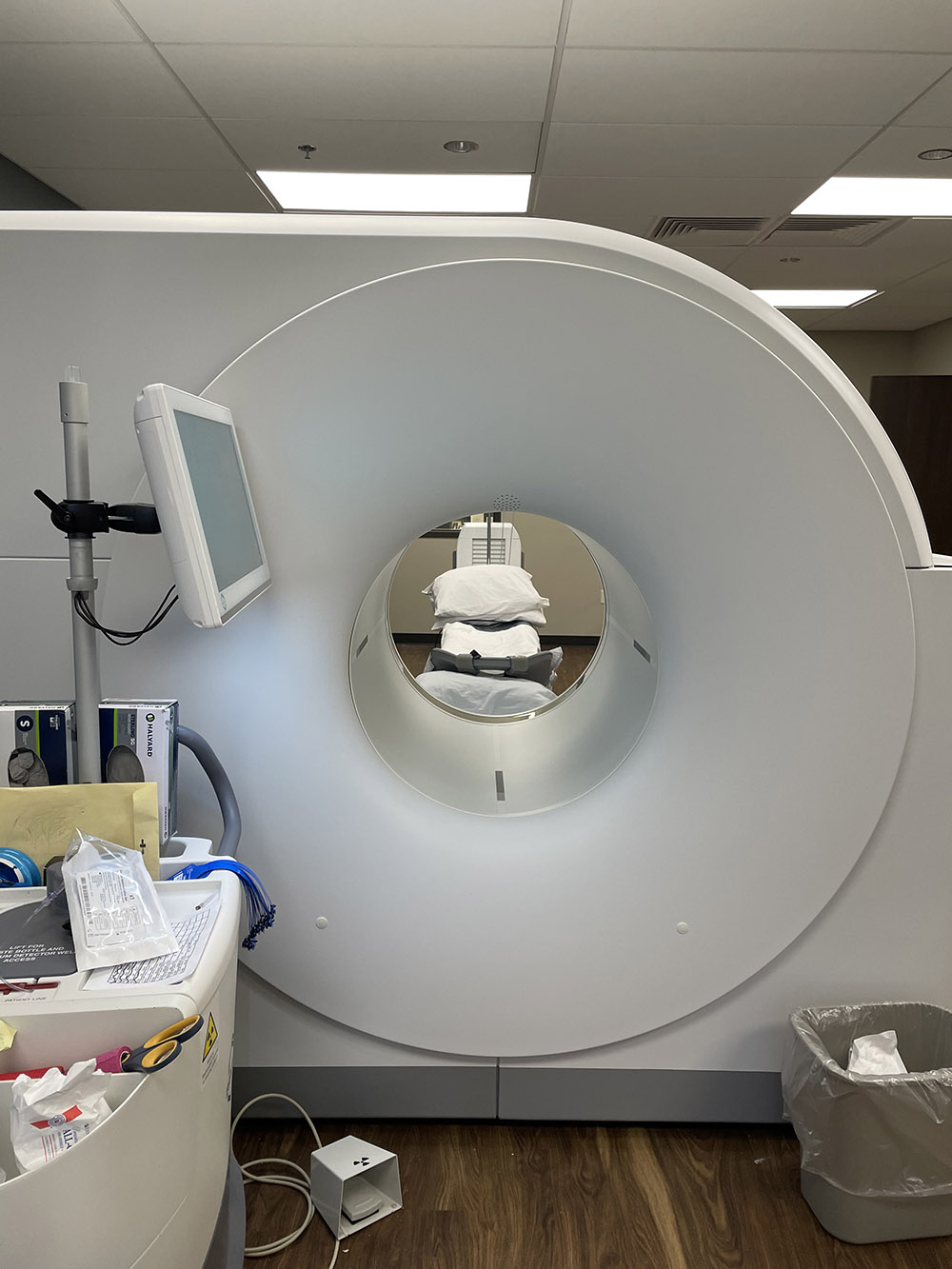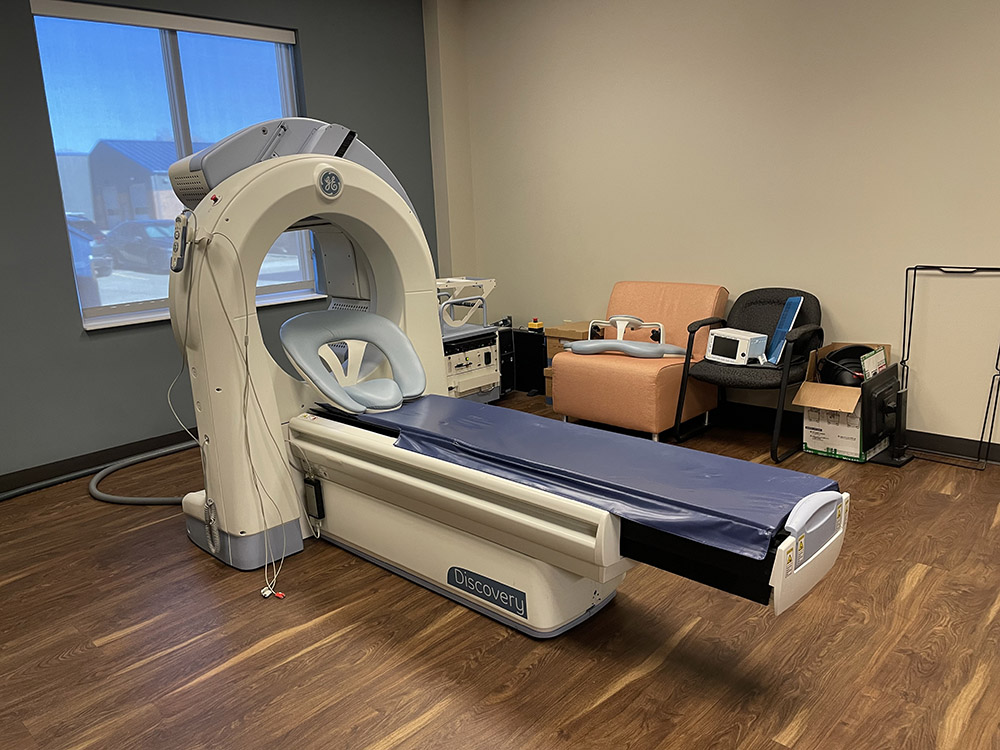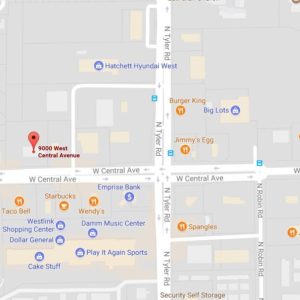In Office Testing
imaging, the cardiac PET/CT scanner measures blood flow through the coronary arteries at rest vs pharmaceutical
stress in real-time. Patients are lying flat on their backs under the scanner once they are injected with a
radioisotope. Next, they are stressed with a pharmaceutical injection to dilate the coronary arteries while the
scanner continues to measure blood flow changes. With no down time for radioisotopes to travel, the process
takes around 30 minutes to complete. There are testing instructions to be followed 24 hours before testing.
This x-ray is to examine the structures and organs in the chest. The testing time may take up to 30 minutes, so please plan accordingly.
Nuclear imaging allows your cardiologist to assess the blood flow through the coronary arteries. Patients take
before and after stress images under a specialized Gamma Camera. They are injected with a radioisotope to track
the blood flow at rest. After a 30-minute circulation period, the patient lays under the camera to detect where
the tracer has reached the heart muscle. They are then stressed either by treadmill or pharmaceutical stress
and re-imaged to compare the changes. Patients should expect to be in the office for around 2 hours to
complete. There are testing instructions to be followed 24 hours before testing.
An echocardiogram is an ultrasound test that examines the structure and function of the heart for abnormalities and disease. Testing time may take up to 45 minutes, so please plan accordingly.
An echocardiogram with bubble study consists of starting an IV and injecting saline. This ultrasound test examines the structure and function of the heart for abnormalities and disease. You will be lying on your left side to allow the technician to perform the ultrasound. Testing time may take up to 45 minutes, so please plan accordingly.
A Stress echocardiogram is an exercise treadmill test combined with an ultrasound of your heart (echo). The test starts by performing an echo. Then you will be connected to an electrocardiogram while on the treadmill. Your blood pressure will be checked while walking on the treadmill. The treadmill will get faster and incline every 3 minutes, the technician will alert you before the treadmill speed and incline changes. You will be speed walking on the treadmill (not running) until your heart rate goal has been reached. Once it’s been reached the technician will then perform another echo and then your test is complete. If you are not able to reach your heart rate goal the treadmill can be stopped at any time. Testing may take up to an hour, so please plan accordingly. This test allows a cardiologist to learn how your heart functions when made to work harder. By comparing your pre-exercise ultrasound images with your post-exercise images. The cardiologist can see appropriate vs. inappropriate responses in the way your heart muscle contracts. Please be sure to wear comfortable clothes and shoes.
A Treadmill is an exercise treadmill test that takes place on a treadmill while being connected to an electrocardiogram. An electrocardiogram is a graphical recording of the cardiac cycle. This allows a cardiologist to learn how your heart functions when made to work harder. The cardiologist can see appropriate vs. inappropriate responses in the way your heart responds. Testing time may take up to an hour, so please plan accordingly. Please be sure to wear comfortable clothes and shoes.
A Carotid Doppler is an ultrasound test that examines the arteries in the neck to determine if there are blockages. Testing time may take up to 45 minutes, so please plan accordingly.
An Arterial Doppler is an ultrasound test that examines the arteries in the arms or legs to determine if there are blockages. Testing time may take up to 45 minutes, so please plan accordingly.
A Venous Doppler is an ultrasound test that provides pictures of the veins throughout the body. Testing time may take up to 45 minutes, so please plan accordingly.
An abdominal aorta is an ultrasound test that examines the main artery that takes blood from your heart to your legs, to check for an aneurysm. Testing time may take up to 45 minutes, so please plan accordingly.
A Heart monitor consists of placing a monitor across your chest. The technician will go over the instructions while wearing your monitor and will inform you of when the monitor needs to be returned. The placement of your monitor may take up to 30 minutes, so please plan accordingly.
VENASEAL™
A Venaseal is the closure of an affected vein. Medical glue is used to seal an affected vein. This
special glue holds the walls of the vein together. It stops the blood flow and then redirects the blood
flow to a healthy vein. With time, your body will absorb the sealed vein, and it will disappear. The
procedure takes about 1 hour and 30 minutes to 2 hours, so please plan accordingly. There are testing
instructions to be followed 24 hours prior to testing.
Venaseal Closure System Preparation Instructions
RadioFrequency Ablation or RFA
RadioFrequency Ablation, or RFA, consists of a technique used to treat varicose veins. During the
procedure, the doctor will use radiofrequency energy to heat and damage a vein’s wall, which will close
off the varicose vein. The veins will be absorbed in the tissue, and blood will then flow to the healthy
veins. The procedure takes about 1 hour and 30 minutes to 2 hours, so please plan accordingly. There are
testing instructions to be followed 24 hours before testing.
VEIN MAPPING
Vein Mapping is an ultrasound of the arteries and blood vessels of the legs. This ultrasound is used to
examine the veins and blood flow to determine if the patient is suffering from a blockage (venous
insufficiency). Testing time may take up to an hour, so please plan accordingly. There are testing
instructions to be followed 24 hours before testing.
Please send all physician orders for diagnostic testing to: diagnosticschedulers@hc-mail.com














